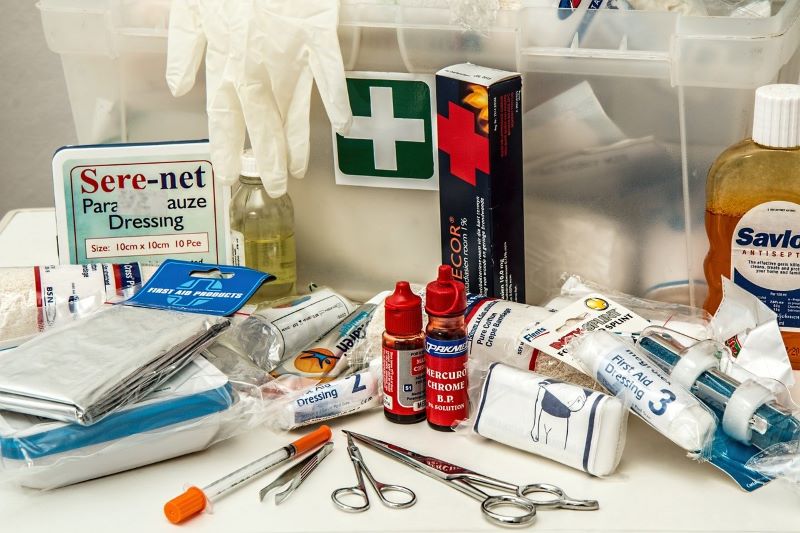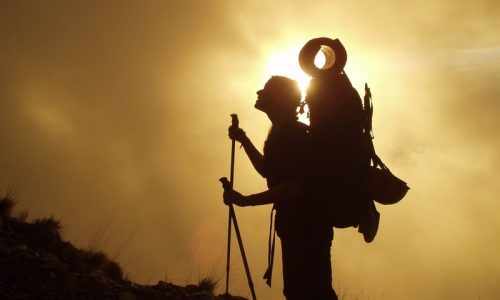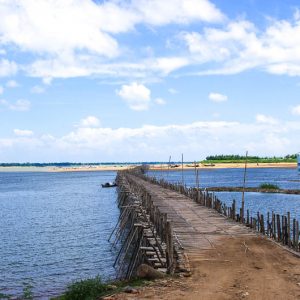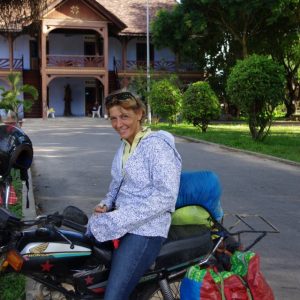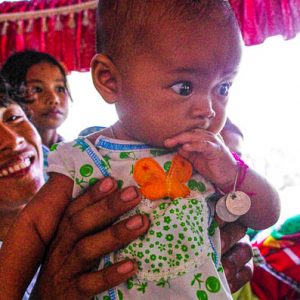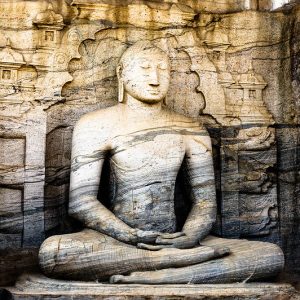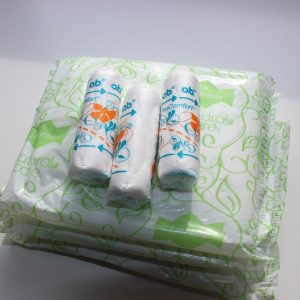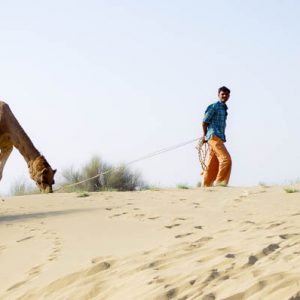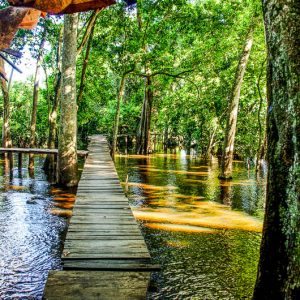With a good first-aid kit, leave well equipped and be ready for any occasion
I may be one of the scared, worried and frightened ones, but I never go on a trek or a trip without my first aid kit. Many travellers don’t have one and I suspect there is a cause and effect link: it is because my kit is well stocked that theyr is empty.
As for the locals, I share my bandages and my Smecta when the case arises. It goes without saying that it’s for little problems. For serious cases, there are doctors and hospitals.
The ideal contents of a first aid kit
For the skin and all external problems
- Bandages
- I think that’s the minimum. Whether it is a sprain, cut, abscess or joint pain, a bandage is always very useful.
- Sterile gauze, in individual bags to keep it clean and make nice bandages
- Straps and plasters, of course.
- A working thermometer (try it befor leaving)
- Scissors (that cut)
- Tweezers : Yes, plural, at least 2, it’s easy to lose those little things. Perfect for splinters, stinging stings, removing small things lodged in a wound… and then to make the eyebrows, why not.
- Fat tulle: Burns are very painful, take time to heal and degenerate quickly. Badly cared for, they will leave ugly scars for life. In order not to bring back this kind of memory and to heal quickly and well, oily tulle protects the burned area and allows the tissues to regenerate.
- Betadine: It disinfects, it cleans, it’s perfect for all wounds, even open ones. In a single dose, they are light and easy to carry for a day’s walk.
- Voltaren or similar
- Fucidine or similar: the perfect antibiotic cream to clean infected wounds that refuse to heal and lead you straight to septicaemia. Little problem is just that they don’t keep for long. They are found just about everywhere in the world, often without a prescription (not like here), so everything is fine.
- Bepanthene or similar: Skin irritation, redness, sunburn, eczema, diaper rash (yes, it’s not just babies who suffer from it).
- Sterile single-dose eye drops: The eyes are important! You really need to have something with you to wash them properly. Once you wake up with the eyes of a rabbit with myxomatosis, you understand why.
- Tiger balm: the must have: Champion of the all-in-one, the tiger balm is concentrated, easy to carry and really effective, beware, the list is not exhaustive!
- Mosquito bite, migraine, cold, cough, stuffy nose, arthritis, muscular pain, joint pain, sore throat, insect repellent, light burns, digestive problems, frozen feet… Be careful to always use it on the skin.
For internal problems: allergies, stomach, pains, etc.
- Smecta, Immodium, Carbolevure, nothing less. Rehydration solutions in case of severe diarrhoea.
- A broad-spectrum antibiotic: Even if you rarely take antibiotics, you are far from our super health system and you will (maybe, don’t panic) face very different conditions: climate, hygiene, beast…so it’s better to have some with you. Besides, it can save someone’s life…
- Antihistamines: These anti-allergy drugs (food, pollen, sun, stinging bugs) are very useful in cases where they are needed.
- Paracetamol, Ibuprofen, aspirin: Anti-fever and anti-pain, they are useful in many cases: headache, hangover, cold, stroke…
For the bang! the crack! the OUCH! Homeopathic Arnica Montana!
Doses of homeopathic Arnica Montana 9CH in single doses are very effective. Inexpensive, easy to carry, arnica is a champion all categories against aches, bruises, after falls and slips, muscular fatigue. One or two days before a big trek with a high difference in altitude, one dose per day allows to avoid painful tomorrows with stiff legs, stuck back, trapezius or abdominal flu. But it seems that it is also effective for the blues of the soul!Special bandages for blisters: the second skin bandages
Difficult to find in many countries or out of price, these “second skin” bandages (Scholl, Urgo or Compeed type) will allow the traveller to continue his journey because, how can you go forward with injured feet? In a humid climate, foot injuries are the most dangerous. They do not heal well and the whole weight of the body rests on them… If the wound is enclosed in a shoe, it will be painful and will take time to “dry”. In an open sandal, at ground level (not clean) it will be attacked by bacteria and the dressing will become dirty. Waterproof and adhesive, these dressings are expensive but really essential. They can be used for hand injuries.To know what to put in your first aid kit, you need to ask yourself the right questions
What are my weak points? Tendons, intestines, migraines? Skin rashes, sun, urinary tract infections? Are you allergic? Once you have answered these questions, go to your favourite doctor and ask him or her what he or she thinks. Visit your beloved pharmacist and ask for advice.You are now ready to deal with a number of situations
- Don’t forget that a first aid kit is like an application, it’s regularly updated.
- Before each departure, a small inspection is not a bad idea.
- If the first aid kit has not been used for a long time, it is important to check it anyway. Shaken, crushed in a bag or suitcase, your kit has probably suffered: the tubes of cream have spilled inside, the pills have come out of their blister pack or the batteries in the thermometer may be out of order…
- The first-aid kit should not exceed one kilo. No need to overdo it! As is often the case, a very busy traveller carries his fear of the unexpected with him.
- You are not going on a Mike Horn style trip, but first aid training, the famous first aid certificate, can be very useful. For you or for others, knowing that you are ready to react helps you to travel serenely.
- A first aid kit must be accessible very quickly
- A kit lost at the bottom of the bag or stored in the wrong place will be of no use in an emergency. Help is often not delayed. A road accident, a knife skidding, a fall, you have to be able to react very quickly and efficiently.
Having a backpack for most backpackers is often to give yourself a “backpacker” look. But most use it as a suitcase or an Ikea bag. However, it is important to load your backpack properly!
